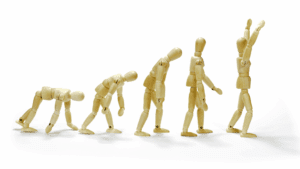Wiring for Disagreement: Evolution in Action
The neuroscience of contentiousness reveals why humans are irresistibly drawn to challenge, debate, and conflict across every social environment. From heated boardroom discussions to passionate dinner table arguments, contentiousness is not a flaw in our nature—it’s a feature of our evolution. The brain’s architecture itself was forged in the crucible of competition, alliance, and survival. Our ancestors who mastered contentiousness weren’t just argumentative—they were adaptive strategists. These social architects learned that persuasion, negotiation, and the occasional show of dominance could secure food, status, and belonging.
Evolutionary neuroscience illustrates that contentiousness was not an afterthought but a primary mechanism for human progress. Early humans faced constant selective pressures where communication, empathy, and strategic dissent determined who survived. The neuroscience of contentiousness exposes this ancient circuitry at work: the amygdala heightens threat awareness, the anterior cingulate cortex detects social contradiction, and the prefrontal cortex orchestrates tactics, restraint, and persuasion. These interconnected systems evolved as a defense against chaos, making contentiousness both a survival reflex and a cognitive art form.
Even in our modern era, the primal brain remains active beneath our polished exteriors. The same neural networks that once helped us argue over hunting grounds now light up in debates over politics or promotions. This continuity explains why the neuroscience of contentiousness still governs our emotional life—conflict sharpens awareness, quickens thought, and fuels a sense of agency. The brain doesn’t differentiate between territorial disputes on the savannah and intellectual battles in a meeting; to the nervous system, both carry the same imperative: assert, defend, adapt.
Imagine the first humans sitting around a fire, disputing how to hunt a mammoth. Each disagreement refined their problem-solving, deepened group bonds, and strengthened their neural cooperation circuits. Modern contentiousness is that same ancient dance of dominance and diplomacy, repurposed for civilization. We no longer wield spears, but arguments; we no longer guard physical boundaries, but ideological and emotional ones. Yet beneath it all, the same biological symphony plays—the rhythm of alertness, emotion, and reason pulsing in unison.
Ultimately, the neuroscience of contentiousness unveils a profound paradox: the very instincts that drive division are also what have allowed humanity to collaborate, innovate, and evolve. The tension between competition and cooperation is not a societal flaw but an evolutionary design—the ancient brain’s blueprint for collective survival and growth.
Neurobiology of Argument: Cognitive Contention Zones
Few things light up our brains like a reasonable dispute. The neuroscience of contentiousness reveals a cascade of activity as we gear up for disagreement. The anterior cingulate cortex, sometimes called the “alarm bell” of the brain, signals when something doesn’t add up or when our perspective is being challenged. This kickstarts the prefrontal cortex—the command center for strategy, impulse-control, and social reasoning.
But the real magic happens in the interplay between emotional centers and rational thought. As we engage in contentious discussions, our limbic system surges with adrenaline and cortisol, making arguments feel urgent and high-stakes. The prefrontal cortex, meanwhile, tries to keep the ship steady, weighing evidence, considering counterarguments, and planning our next move. This dynamic tension is the essence of the neuroscience of contentiousness: a constant interplay between our instinct to defend and the intellect to persuade or listen.
Professional negotiators, trial lawyers, or leaders adept in contentious environments often show increased grey matter density in these regulatory brain regions. It’s not just practice; it’s neural architecture shaped by years of intellectual sparring. The more we thoughtfully contend, the better we get at harnessing the chemistry of argument for positive outcomes.
The Anatomy of Pushback: Social Threat and Reward Pathways
Why does an argument sometimes feel more like a boxing match than a conversation? The neuroscience of contentiousness reveals that when someone pushes our buttons or questions our expertise, our brains perceive the offense as a significant threat. The amygdala, our brain’s master of fear and aggression, instantly floods the body with alert signals, while the hypothalamus mobilizes resources for “fight or flight.” Contentiousness quickly moves from mental jousting to physiological power, leaving hearts pounding and palms sweating as each participant gears up for battle.
Crucially, the neuroscience of contentiousness reveals its fascinating duality. Though contentiousness is often dismissed as a negative trait, brain science demonstrates that, in the right conditions, even heated pushback can prime the mind for peak performance. The act of defending a position sparks faster processing in the anterior cingulate cortex, boosting mental agility and sharpening focus. For some, the anticipation of conflict triggers increased resilience and improved insight, turning the battleground of ideas into a mental arena for growth.
Yet arguments are not just about defense—they’re also about reward. The neuroscience of contentiousness details the addictive pleasure found in winning a debate, no matter how trivial. Triumph lights up the ventral striatum in the brain, launching dopamine surges that reinforce assertiveness and drive the urge to debate repeatedly. Social media exploits this circuitry: every like, retweet, or instant feedback strengthens the contentiousness loop, making online engagement nearly irresistible.
Evolutionary psychology backs up the neuroscience of contentiousness with compelling evidence. Those who mastered the art of contentiousness were the influencers, negotiators, and strategists of their tribes—often rising to leadership through their skillful use of conflict. Modern descendants of these thinkers run board meetings and social platforms, showing the legacy of contentious brains, always seeking the upper hand yet agile enough to transform friction into connection.
Psychological Roots of Contentiousness
The neuroscience of contentiousness invites us to reconsider why some people seek conflict like oxygen, while others do everything to avoid it. Just as some are natural peacemakers, others find themselves instinctively ready to argue a point, no matter how minor. These stark individual differences in contentiousness are not random; they are shaped by a complex interplay of genetic inheritance, early social learning, and the neural wiring of emotional regulation circuits.
Recent neuroscience research shows that those high in trait contentiousness (often measured as assertiveness or competitiveness) exhibit patterns in the orbitofrontal cortex and limbic system that prime them to detect challenge, respond quickly to disagreement, and thrive in dynamic debate. For these individuals, the very act of contention triggers a potent blend of adrenaline and reward—arguments can feel as stimulating as games, with emotional stakes as thrilling as competition. Their brains are wired for friction, always alert for opportunities to defend ideas, push boundaries, and test social limits.
But it’s not simply biology at play. The neuroscience of contentiousness also highlights how early experiences shape these traits for a lifetime. Children raised in environments that encourage debate and inquiry tend to build robust prefrontal cortex pathways, capable of self-control and flexible argument. They learn that disagreement is a tool for discovery, not just a threat to identity. In contrast, those raised in punitive, unpredictable, or emotionally charged households may develop a hypersensitive stress response—contentiousness becomes an anxious defense instead of a creative practice, with the brain adapting for vigilance rather than curiosity.
Life experience matters, especially in the development of contentiousness over time. Just as the brain remains plastic into adulthood, so too does one’s relationship with disagreement. The neuroscience of contentiousness is optimistic: new skills and perspectives can always be learned. Through self-awareness, emotional intelligence, and deliberate practice, even those with entrenched reactivity can reshape their neural responses to contention and transform adversarial behavior into adaptive growth.
From Caveman Confrontation to Twitter Wars

The neuroscience of contentiousness reveals just how seamlessly our ancient drive for dispute has evolved alongside every technological leap, always seeking out new battlegrounds—first fire-lit caves, now glowing screens. Today, the most volatile and public displays of contentiousness unfold online, where anonymity and digital distance amplify our primal instincts. The neuroscience of contentiousness is especially vivid in digital life, where emotional impulses and defensive reactions outpace our rational filters. With no physical cues, facial expressions, or direct social accountability, the “emotional brakes” usually provided by our mirror neuron system are disengaged—conflicts escalate in milliseconds, transforming comment threads into modern tribal skirmishes.
Yet, the neuroscience of contentiousness explains why these digital spats are not just social byproducts, but brain-based phenomena. Algorithms are now sophisticated extensions of our evolved desire for attention, validation, and tribal belonging. They feed and magnify contentiousness, steering the brain toward polarization and amplifying the dopamine rush that comes from “winning” an online argument or seeing our post go viral. Left unchecked, digital contentiousness transforms group discourse into tribal warfare, distorting our sense of safety and belonging.
But there’s a fascinating twist. The neuroscience of contentiousness also shows that, with intention, online environments can become new spaces for coalition-building, creative debate, and meaningful dialogue. Social media feeds, video calls, and virtual forums enable our brains to engage in conflict on a previously unseen scale and reach, sometimes forging alliances between wildly different perspectives. Every digital interaction is a reflection of the brain’s deep-seated push-pull between defensive armor and exploratory curiosity. In this arena, the neuroscience of contentiousness isn’t a cautionary tale—it’s a powerful map for navigating, understanding, and perhaps reshaping the future of human discourse.
Contentiousness as Creativity Catalyst
Far from being merely destructive, productive contentiousness can be an engine for invention and collaboration. The evolutionary advantage of disagreement is not just survival—it’s progress. In high-functioning teams, a degree of healthy contention promotes divergent thinking, as the dorsolateral prefrontal cortex lights up to consider new possibilities.
A robust argument, when viewed as an exploration rather than a battle, can clarify ideas and expose blind spots. The neuroscience of contentiousness suggests that when systems reward curiosity and respect, disagreement sharpens minds and drives innovation. Creative industries, scientific research teams, and even legendary duos (think Lennon and McCartney, or Jobs and Wozniak) thrive on constructive conflict—they depend on that spark of contentiousness to push boundaries.
Successful cultures foster a “challenge network” mentality, where pushing back is not just tolerated but rewarded, provided it is done with emotional intelligence. The result? More robust solutions, deeper relationships, and teams that can withstand pressure and pivot with confidence.
The Social Brain: Navigating Group Contention
The neuroscience of contentiousness uncovers an extraordinary truth: our brains are biologically engineered to thrive—and sometimes struggle—in group dynamics. As a social organ, the human brain has dedicated circuits for contentiousness, allowing us to interpret group norms, negotiate status, and modulate reactions in real-time. Core regions like the temporoparietal junction (TPJ) and medial prefrontal cortex are the command centers for reading intentions, decoding emotions, and crafting strategic arguments. These neural hubs give us the uncanny ability to “read the room,” pivot conversations, and repair social ruptures after a heated debate.
The neuroscience of contentiousness also highlights how the anterior cingulate cortex keeps us alert for error and challenge, making the experience of group contention both a personal and collective phenomenon. The default mode network, which processes social belonging and group membership, is activated during moments of lively debate or subtle conformity. In environments like academic seminars, innovation labs, or high-stakes negotiations, contentiousness is celebrated; sharp minds spar, refining ideas through respectful challenge. In contrast, groups that suppress dissent—whether due to rigid hierarchy or fear—can trigger conformity and stifle creativity, breeding unspoken tension and groupthink.
At a deeper level, the neuroscience of contentiousness reveals how group identity, empathy, and bias shape every interaction. When individuals perceive themselves as part of a team or tribe, social reward circuits motivate them to stand up for in-group beliefs. Empathy and cooperation flourish when TPJ and ventromedial prefrontal cortex are activated; however, out-group conflicts may see increased activity in the limbic system, amplifying us-versus-them division and contentiousness. Ultimately, our brains crave both social connection and independent thought—a delicate balance that defines the art of navigating contentious group waters. Skills like strategic timing, humility, and deep listening, all supported by neural plasticity, are key to transforming contentiousness into powerful collaboration.
Intimate Relationships: Contentiousness and Connection
The neuroscience of contentiousness is profoundly influential in the arena of intimate relationships. With stakes higher and emotions rawer, contentiousness in couples or close partnerships tests not just boundaries but the resilience and adaptability of emotional bonds. Every day disagreements around finances, routines, or core values spark a cascade of activity in the amygdala, flagging potential emotional threat. At the same time, the anterior cingulate cortex conducts a cost-benefit analysis between harmony and self-advocacy.
Yet, the neuroscience of contentiousness demonstrates that not all relational conflict is damaging. When partners meet disagreement with vulnerability, curiosity, and self-awareness, contentiousness becomes a bridge rather than a barrier. Constructive contentiousness guides couples to confront differences and misunderstandings openly, fostering mutual understanding and genuine intimacy. The practice of intentional, respectful disagreement activates neural pathways for emotional regulation, helping partners to move beyond fear and reactivity toward forgiveness, empathy, and shared growth.
For those who can master the art of navigating contentious relationships, their brain rewires themselves to anticipate rather than avoid conflict. Couples build robust emotional resilience, learning to de-escalate, repair, and reconnect even after the most heated exchanges. The neuroscience of contentiousness suggests that well-managed relational conflict deepens trust, unearths hidden strengths, and catalyzes personal transformation, turning friction into fuel for lasting connection. Whether in long-term partnerships or new relationships, honoring contentiousness as a natural, creative force is the secret to thriving together with authenticity and depth.
Child and Parent: The Early Lessons of Contentiousness

The neuroscience of contentiousness emerges most vividly in the everyday push and pull between children and parents. From those epic battles over bedtime, struggles with sharing, and fiercely negotiated chores, children’s contentiousness is actually their way of testing the social world and wiring their brains for future success. Science reveals that in these moments, a child’s brain is running high-speed simulations: the amygdala fires with emotional intensity, the anterior cingulate cortex evaluates fairness and justice, and the prefrontal cortex weighs strategies for persuasion or compromise. This is not just childlike rebellion—it’s the neuroscience of contentiousness in action, prepping young minds to navigate complexity, risk, and relationships.
For parents, every standoff is an opportunity to engage with the neuroscience of contentiousness. Emotionally intelligent parents who model calm negotiation and respectful dissent activate their child’s brain networks for empathy and self-regulation. When a household allows healthy contentiousness—room for disagreement and independent thought—children learn the core skills for lifelong self-advocacy, resilience, and constructive contention. The neuroscience of contentiousness supports this approach: children’s neural development flourishes when pushback is met with guidance, not suppression or confrontation.
However, neglecting or mishandling contentiousness—by either ignoring a child’s voice or punishing dissent—can rewire neural pathways towards defensiveness, avoidance, or even chronic anxiety. In homes where contentiousness is explosively reinforced or strictly shut down, the child’s brain adapts, often carrying these emotional patterns into professional life and adult relationships. The neuroscience of contentiousness thus becomes a compass for parenting well—empowering children to challenge, question, and adapt while remaining emotionally connected..
Contentiousness in Professional Development
In the world of career advancement, the neuroscience of contentiousness is the secret weapon behind truly remarkable leadership. Every pitch defended, each negotiation tabled, or innovative idea launched is a product of contentiousness skillfully managed. The ability to toggle between assertion and openness—to spark healthy debate without tipping into destructive conflict—hinges on a leader’s mastery of neural regulation and emotional intelligence.
Neuroscience-based coaching reveals that successful professionals develop robust prefrontal cortex regulation, enabling them to notice emotional triggers yet choose thoughtful responses in contentious moments. They become fluent in meta-cognition—analyzing their own strategic thinking in real time, turning friction into feedback. By inviting dissent and modeling curiosity, the best leaders harness contentiousness to fuel team innovation, creative problem solving, and organizational growth.
The neuroscience of contentiousness cautions that ignoring conflict or suppressing debate breeds stagnation, groupthink, and burnout. High-performing workplaces encourage respectful contention, using emotional self-awareness to maintain psychological safety amid complexity. Whether navigating boardroom battles or policy disputes, those who understand the neuroscience of contentiousness can transform tension into opportunity, guiding organizations to thrive, adapt, and boldly lead.
Contentiousness in the Age of Polarization
The neuroscience of contentiousness offers profound insight into today’s world of division, polarization, and cultural stress. As societies face rapid technological, economic, and political changes, our primal instincts for tribal safety and threat detection intensify. When contentiousness manifests in political debates, online forums, or social movements, it signifies not just a problem—but a deep signal of identity in flux. The brain’s pain centers, activated by social exclusion or public rejection, treat polarized disagreement as a real, physical threat.
Yet, the neuroscience of contentiousness can also guide healing and bridge-building in divided societies. Social rituals that create shared narratives—meals, collaborative projects, genuine dialogue—reactivate circuits for empathy and compromise in the brain. Sustained, safe contentiousness, where people with opposing views engage repeatedly, acts like a social immune system, strengthening democracy and adaptability. When contentiousness is exiled—banned from the public square—echo chambers and extremism thrive, undermining collective progress.
Through understanding the neuroscience of contentiousness, leaders and communities can design interventions that make disagreement generative, not destructive—turning division into resilience, and polarization into possibility.
Intrapersonal Contentiousness: The Internal Debate

The neuroscience of contentiousness isn’t just outward—it’s a daily drama, unfolding within our own minds. Every internal negotiation, every moment of indecision, is the brain’s contentiousness at work. The prefrontal cortex and default mode network act as courtroom judges, weighing future opportunities, unresolved regrets, and competing values. Should one speak out or stay silent, choose caution or embrace risk? Each inner debate is a powerful rehearsal for the complex negotiations of life.
Far from being annoying mental “noise,” the neuroscience of contentiousness views inner conflict as vital. Engaging with internal contentiousness—with curiosity, patience, and metacognitive awareness—builds psychological strength and authentic leadership. Those who master self-directed contentiousness learn to delay impulsivity, integrate paradoxes, and find creative synthesis between opposing impulses. As a result, when external disagreements arise, they are better prepared to navigate with clarity, wisdom, and emotional stability.
The neuroscience of contentiousness ultimately reframes inner conflict as fuel for growth, innovation, and deeper self-understanding—empowering individuals to bring their best selves to every relationship and every challenge.
The Contention Spectrum: Productive vs. Destructive
Not all contentiousness is helpful, of course. The neuroscience of contentiousness highlights a spectrum: on one end, you find productive contention—open, curious, channeled toward shared goals, on the other, destructive conflict—rigid, reactive, fueled by unexamined triggers. The difference lies partly in neural recruitment: when higher-order brain centers mediate emotional reactivity, the result is generative dialogue; when not, ancient brain circuits dominate, and the outcome is both predictable and painful.
Teaching ourselves and our communities to recognize and act upon this spectrum is transformative. It’s about recalibrating threat circuitry, activating perspective, and fostering the self-awareness to adjust mid-conflict. Over time, repeated practice changes the brain: contentiousness becomes not just easier but more generative—a true catalyst for connection.
The Cultural Story of Contentiousness
Culture shapes how contentiousness unfolds, lending it nuance and drama. The neuroscience of contentiousness reveals that universal brain circuits power all disagreement, yet each society customizes its style. Some cultures choreograph contention in ritualized debates, blending tradition and civility; others favor explosive, spontaneous expressions as vital signs of passion or authenticity. Organizational microclimates, regional traditions, and national norms all shape when and how contentiousness expresses itself.
In Scandinavia, civic contentiousness advances democracy; in East Asia, subtle, restrained disagreements protect harmony. In the U.S., open debate signals engagement—sometimes bordering on spectacle. The most effective leaders and change agents understand not just the science but the cultural choreography of the neuroscience of contentiousness. They learn to honor traditions, adapt their approach, and create spaces where all voices are welcomed—while keeping dialogue creative, inclusive, and dynamic.
Elevating Contentiousness: Toward Excellence in Debate
Mastering contentiousness means embracing discomfort, curiosity, and a relentless drive toward growth. The neuroscience of contentiousness reframes debate as more than adversity—it’s a crucible that tempers insight, sharpens intellect, and inspires courage. High performers, whether in coaching, leadership, or creative teams, step willingly into the uncertain fire of meaningful contention: listening, learning, and stretching beyond comfort zones.
Through repeated, deliberate practice, contentiousness transforms from threat into opportunity—a force that deepens relationships, catalyzes breakthroughs, and propels societies forward. Those who embody the neuroscience of contentiousness do not merely navigate chaos; they harness its energy to build clarity, wisdom, and connection. In the future, greatness will belong to those who elevate contentiousness with intention, humility, and joy—turning every debate into a celebration of human potential.
Bringing It All Together: Applied Insights from the Neuroscience of Contentiousness
Exploring the neuroscience of contentiousness reveals that our tendency to challenge, debate, and resist is not random or problematic, but rather a deeply ingrained feature of both brain function and human development. Across every domain—child–parent relationships, group dynamics, professional advancement, intimate partnerships, and even societal polarization—contentiousness reflects the interplay between our neurological circuits for threat, reward, learning, and social connection.
Through this transactional lens, contentiousness emerges as a resource with measurable strategic value. Understanding its neurobiological roots enables individuals and organizations to move beyond avoidance or suppression, instead leveraging healthy contention for personal growth, innovative problem-solving, and resilient relationships. By recognizing the spectrum from productive to destructive contentiousness, adjusting behaviors within cultural and situational contexts, and harnessing lessons from neuroplasticity, readers can apply these insights to develop more adaptive, practical approaches to conflict.
Ultimately, integrating the neuroscience of contentiousness into daily practice means approaching disagreement with intention, clarity, and emotional intelligence. Whether the goal is improved parenting, higher-performing teams, better relationship management, or navigating polarization, actionable strategies grounded in neuroscience equip us to transform friction into momentum—and contention into progress.## Bringing It All Together: Applied Insights from the Neuroscience of Contentiousness
The neuroscience of contentiousness reveals that conflict, challenge, and debate are not merely social obstacles—they are meaningful tools for growth, resilience, and strategic advantage. Across childhood, relationships, professional life, and even polarized communities, contentiousness is continuously powered by dynamic neural networks that shape how we assert, listen, adapt, and cooperate. Recognizing the difference between productive and destructive contention is essential: those who leverage self-awareness, emotional regulation, and a firm grasp of neuroplasticity are positioned to use contentiousness as a driver for creative solutions and healthy boundaries.
By applying these interdisciplinary insights, leaders, parents, coaches, and individuals can move from reaction to thoughtful engagement, transforming everyday friction into practical momentum for advancement. The neuroscience of contentiousness empowers us to engage disagreement constructively, resolve differences efficiently, and use conflict as a launchpad for adaptation. When integrated with cultural understanding and strategic communication, contentiousness ceases to be a liability and becomes a powerful asset. Harnessed with intention, it is the key to turning challenge into progress and uncertainty into opportunity.
What My Clients Ask Me Most About the Neuroscience of Contentiousness
To address the most frequent real-world concerns, here are the top five questions my clients ask about the neuroscience of contentiousness—each paired with a well-grounded answer reflecting my expertise in neuropsychology and coaching.
u003cstrongu003e1. Why do I sometimes lose control during an argument, despite my best intentions?u003c/strongu003e
The neuroscience of contentiousness makes clear that losing control in arguments stems from ancient survival circuits in the brain. When you feel threatened or challenged, your amygdala triggers intense emotional and defensive reactions, often before your rational prefrontal cortex can intervene. Practicing mindful awareness and deliberate pausing allows you to strengthen the prefrontal cortex’s ability to regulate impulsive responses and make contentiousness a tool for growth, rather than a source of regret.u003cbru003e
u003cstrongu003e 2. Is contentiousness always harmful in relationships, or can it be a sign of strength?u003c/strongu003e
Not all contentiousness signals dysfunction—the neuroscience of contentiousness shows it’s a natural part of close relationships. When approached with curiosity and respect, contentiousness helps couples or friends clarify their own values, understand each other more deeply, and develop emotional resilience together. The key is learning to distinguish between destructive contentiousness and productive, growth-enhancing debate.
u003cstrongu003e3. Why do some people seem to thrive on contentiousness while others avoid it at all costs?u003c/strongu003e
The neuroscience of contentiousness reveals that some individuals’ brains are wired to respond positively to challenge and debate. They receive dopamine rewards from intellectual u0022combat,u0022 and their prefrontal cortex is better at regulating emotional outbursts. Others are more sensitive to social threat signals, which can make contentiousness feel overwhelming or dangerous. Early life experiences, personality traits, and neurobiological differences all shape our comfort level with contention.
u003cstrongu003e4. How can I use the neuroscience of contentiousness to improve leadership and team dynamics?u003c/strongu003e
u003cbru003eApplying the neuroscience of contentiousness in professional settings means fostering healthy disagreement, emotional awareness, and psychological safety. Leaders who encourage respectful dissent build stronger teams, sharpen problem-solving, and prevent groupthink. By understanding how conflict triggers both stress and reward circuits, you can turn contentiousness into a catalyst for creative solutions and personal growth.
u003cstrongu003e5. What practical steps help transform contentiousness into constructive dialogue in daily life?u003c/strongu003e
The neuroscience of contentiousness suggests a few essential habits: increase self-awareness of emotional triggers, practice active listening with genuine curiosity, and create space for reflection before reacting. Whenever you feel drawn into contentiousness, remind yourself that your brain is wired for both competition and connection. Use that awareness to set boundaries, invite clarity, and transform conflict into an opportunity for learning and progress.
For further insights. read: Working Memory: The Neuroscience Behind Brain Function
#neuroscience #contentiousness #brain #psychology #debate #conflict #neurobiology #personaldevelopment #socialconflict #evolutionarypsychology #professionaldevelopment



